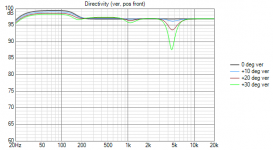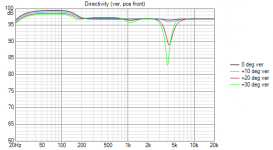Boys, at this level of agora fight, the lurkers would want to read your top five compression drivers and classic drivers you played with and you ranked for your best pleasure -hummm, alleged to be in your main system or close to be-
show your cards... we know some for the others threads you talk into : HF1440, 1460A, SB17CAC, REVELATOR and iluminator, TAD 4001, some Acutons mids... what else ?
ok, i can not play, the only one I know is the 10F from the SS classic line, but I find it to ber a very acurate mid, while called full range and being only 3"... some would say a little cold and prefer some faital paper, or Fostex, I found them below the SS cause less neutral !
show your cards... we know some for the others threads you talk into : HF1440, 1460A, SB17CAC, REVELATOR and iluminator, TAD 4001, some Acutons mids... what else ?
ok, i can not play, the only one I know is the 10F from the SS classic line, but I find it to ber a very acurate mid, while called full range and being only 3"... some would say a little cold and prefer some faital paper, or Fostex, I found them below the SS cause less neutral !
Last edited:
ok, i can not play, the only one I know is the 10F from the SS classic line, but I find it to be a very acurate mid, while called full range and being only 3"... some would say a little cold and prefer some faital paper, or Fostex, I found them below the SS cause less neutral !
I found the 10F was not neutral at all. This is normal for such an advanced cone material. But it is I think more neutral than most high end cone materials. But when compared to paper cones, no, nothing yet can beat paper...
Faital, Fostex, etc. on the other hand are not bad because of the paper material. They are bad because of the distortion and uneven frequency response. The initial conclusion of this thread said that if we equalize these drivers' responses they might sound the same to most ears with more expensive ones which usually are better designed.
Once the response is equalized it is only minute difference that determines the neutrality, as an effect of distortion that cannot be perceived easily by most ears.
Hey John
Yo wrote/write
... That Klippel Test is for sissies 😀 It is there for "marketing" purposes. ...
... This is normal for such an advanced cone material ...
Can you please elaborate these statements of yours?
Yo wrote/write
... That Klippel Test is for sissies 😀 It is there for "marketing" purposes. ...
... This is normal for such an advanced cone material ...
Can you please elaborate these statements of yours?
Last edited:
You are not snobbish at all. I just wanted to make a slight jux about a rather weird interpretation of my average result. In the sense of "best results/scores are where the curve reaches it's highes values".... Didn't want to sound snobbish ...
I think this is an opinion that has to be backed up somehow. I think paper can be good enough, if well designed. But stating ‘nothing can beat this or that’ is a far too simple approach to me.But when compared to paper cones, no, nothing yet can beat paper.
I think this is an opinion that has to be backed up somehow. I think paper can be good enough, if well designed. But stating ‘nothing can beat this or that’ is a far too simple approach to me.
Should be clear from previous sentences that I mean: nothing can beat it in term of "neutrality". Many affects neutrality but the distortion associated with stiff materials is I think the main factor contributing to unnatural midrange.
Paper is not stiff so cannot behave like a piston. There are other good things that we want from midrange reproduction that cannot be given by flexing cone material like paper. But I think advanced cone manufacturers like Focal know very well the problem of their drivers.
there is a lot about regular midranges, but what about drivers that work in upper part of midrange? i'm looking for a driver that would fit in 1-4kHz freq. range and there are compromises everywhere 🙂 like faceplate to big (C-C distance); high HD or off axis response not great
drivers i looked at:
Dayton RS52AN-8 -off axis looks good; HD looks good; membrane resonance at aprox. 12kHz so there will always be some response in that area; faceplate is probably removable so i'll be able to manufacture smaller
Visaton DSM 50 FFL - same as above except - faceplate is removable and no HD measurements to be found
MD60n - off axis; HD worse than above speakers; Bl/sq.Re vs Mms ratio very high; large faceplate and not removable
Tectonic TEBM46C20N-4B - Sensitivity and power handling is low; rest looks very good
what other drivers could be considered as best 🙂 ? i'd like to cross it with ribbon TW at approx. 4-5kHz and at lowest possible C-C distance
drivers i looked at:
Dayton RS52AN-8 -off axis looks good; HD looks good; membrane resonance at aprox. 12kHz so there will always be some response in that area; faceplate is probably removable so i'll be able to manufacture smaller
Visaton DSM 50 FFL - same as above except - faceplate is removable and no HD measurements to be found
MD60n - off axis; HD worse than above speakers; Bl/sq.Re vs Mms ratio very high; large faceplate and not removable
Tectonic TEBM46C20N-4B - Sensitivity and power handling is low; rest looks very good
what other drivers could be considered as best 🙂 ? i'd like to cross it with ribbon TW at approx. 4-5kHz and at lowest possible C-C distance
... That Klippel Test is for sissies 😀 It is there for "marketing" purposes. ...
Can you please elaborate these statements of yours?
It's just a joke. But that it is easy was not a joke. They have their intentions and that's their goal.
... This is normal for such an advanced cone material ...
Can you please elaborate these statements of yours?
I hope it is clear from my previous post. Various glass cone material in my opinion have their own "character".
there is a lot about regular midranges, but what about drivers that work in upper part of midrange? i'm looking for a driver that would fit in 1-4kHz freq. range and there are compromises everywhere 🙂 like faceplate to big (C-C distance); high HD or off axis response not great
Call me cheap, but I'm a perfectionist and I don't really care with such driver perfections. Why? Because there are other things that is even more critical and it is not always easy to make a perfect system out of perfect drivers.
I'm not a good cook, so why worry with imperfect onions.
what other drivers could be considered as best 🙂 ? i'd like to cross it with ribbon TW at approx. 4-5kHz and at lowest possible C-C distance
Morel tweemid TM4055-8 is a better solution.
Morel tweemid TM4055-8 is a better solution.
what on earth is that 🙂 - C-C distance is approx. 62mm
directivity is way better ...but how will i fit ribbon in that 😀
Call me cheap, but I'm a perfectionist and I don't really care with such driver perfections. Why? Because there are other things that is even more critical and it is not always easy to make a perfect system out of perfect drivers.
I'm not a good cook, so why worry with imperfect onions.
well; it's intended pun 🙂 this thread is about perfect midranges. i need good enaugh; there are no perfect ones
Attachments
Last edited:
i need good enaugh; there are no perfect ones
Don't you have one already?? Then keep searching. Once you have it, try to make a "perfect" system out of it 🙂
Just like meals, perfect ingredients mean nothing if it doesn't taste good.
Last edited:
I was just tired every time in this forum I hear/read people accused others of bad things simply because he couldn't understand why he couldn't hear what few others could.
It's like thinking that other people's IQs must be as low as his.
just to say this is very well said!
I found the 10F was not neutral at all. This is normal for such an advanced cone material. But it is I think more neutral than most high end cone materials. But when compared to paper cones, no, nothing yet can beat paper...
Faital, Fostex, etc. on the other hand are not bad because of the paper material. They are bad because of the distortion and uneven frequency response. The initial conclusion of this thread said that if we equalize these drivers' responses they might sound the same to most ears with more expensive ones which usually are better designed.
Once the response is equalized it is only minute difference that determines the neutrality, as an effect of distortion that cannot be perceived easily by most ears.
that's funny, I found it was the only onre of the 3" in XRK test to climb high and stay cleans with bells and trumpet possibilities in the high end...which was the trigger to buy it. While I have some areogel Audax or nomex I like too (weel all drivers are colored more or less)
Nothing to say about EQ... but for me sorting out drivers is still important cause I 'm staying with passive filters, so EQ is not possible acuratly. I will go for sure for active when I can affoard it when it could compit with the dac I have. I like paper too, while my everyday loudspeaker is aluminium from 125 hz to 20 K hz...
I'm on the camp of the pudding proof, so not definitly on a camp of a material or technology

... there is a lot about regular midranges, but what about drivers that work in upper part of midrange? i'm looking for a driver that would fit in 1-4kHz freq. range and there are compromises everywhere ...
So we are up to split the midrange discussion into the “lowermid” and “uppermid” league. And maybe introduce a “midmid” flawor. Your remarks about the 1kHz … 4kHz seems is quite true to me. Because I did not find any suitable, “best” midranges for this range until now.
Let me explain: I have made experiences with a “lowermid”, a “midmid” and two “uppermid” drivers while designing an amusing myself with Horbach-Keele Arrays some time ago.
My “lowermid” was the Seas Excel W22EX001. It’s an excellent magnesium cone driver, besides falling apart to dust (Magnesium oxide) in the long term if your climate is too moist. Measuring these drivers with the cosine windowed ping-test, it became clear that it’s upper working limit was at approx. 1250Hz, which is below the THD peaking of the 3rd harmonic distorion of it’s first cone resonance at some 5kHz. This was much above what was needed from the geometry of my Horbach-Keele system, so the W22Ex was the “best midrange” at this place and suited the bill by large margin.
W22_Ping_4c_cos_1000.jpg
W22_Ping_4c_cos_1250.jpg
W22_Ping_4c_cos_1600.jpg
W22_Ping_4c_cos_2000.jpg
My “midmid” was a Seas Excel W12CY001. Also this driver’s magnesium cone breaks up like nasty sunday morning’s bells, threefold at 10kHz, 12kHz and 15kHz. And these resonances show up as increased harmonic distortion in the lower frequency region at f_breakup/2 and f_breakup/3 , so that this driver was finally usable only to some 2.5kHz for very best results in terms of THD. Tweaking a xover, for fun and interest, the graph relates to the best and lowest THD figures (black curve) of this drivers when driven by a NT2nd bandpass from 700Hz … 2.2kHz. Not really a broadband configuration ...
W12CY_THD.jpg
W12_THD_NT1_700-2200.png
Besides this, a 2.2kHz highpass was too low for the intended tweeter SPL in my project. So let’s look for a “highermid” or an “uppermid”. The missing link? I unsuccessfully tested two of them, a decent, but still not good enough SB65WBA and a quit[FONT=Liberation Serif, serif]e awful Peerless [/FONT][FONT=Liberation Serif, serif]PLS-P830983 [/FONT]for this wished-for 700Hz … 4kHz range. Measurements in the following graphs are with a NT2 bandpass from 800Hz … 3.5kHz. Neither of them was brillant, the SB65WBA becoming really nice only at > 1.8kHz. So this was a blind alley. From today’s perspective, and in the logic of this thread, unfortunately I missed to also ABX-listen to these two drivers, because it was so evident from the measurements that the SB was of superior quality. I guess that a person with a correct Klippel score might be able to take one apart from the other because of the high amount of THD the Peerless presents.
SB65_THD.jpg
SB65WBA_NT2_800-3500.png
Peerless_NT2_800-3500.png
PeerlessVsSb_NT2_800-3500.png
So this set of drivers would have neccessiated a hinarious midranges multiway system with the W22EX001 from e.g. 250Hz to 700Hz, then a ridiculously narrow-banded W12CY001 from 700Hz … 1.8kHz and then an also ridiculously narrow-banded SB65WBA from 1.8kHz up to 3.5kHz or 4kHz. Messy, messy … And from 4kHz upwards the tweeter. The tweeter instead would have bee then freed of the burden to reproduce lower bands at higher levels.
My personal conclusion was that there might not be really neat and nice enough, “world best” midrange drivers for a standard multiway system. And neither for a Horbach-Keele array. Therefore and in the end I bought a pair of Quad ESL 63. And I am delighted with them. This ESL really is the best midrange I ever listened to. I guess that even Troels Gravesen would agree with that after having confessed something about his everyday home system:
http://www.troelsgravesen.dk/The-Loudspeaker-III.htm:
Troels Gravesen said:“ … It is the closest I have come to my QUAD 2812 speakers in terms of a coherent and utterly transparent soundstage - plus the dynamics the QUADs are short of ...”
Now also this one seems SHOCKING - Troels Gravesen listening to custom gear at home... But why not?
Attachments
-
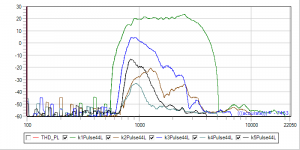 Peerless_NT2_800-3500.png26.7 KB · Views: 99
Peerless_NT2_800-3500.png26.7 KB · Views: 99 -
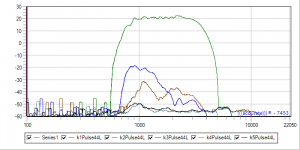 SB65WBA_NT2_800-3500.png24.5 KB · Views: 103
SB65WBA_NT2_800-3500.png24.5 KB · Views: 103 -
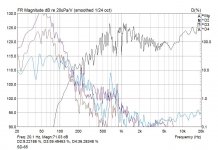 SB65_THD.jpg106.2 KB · Views: 96
SB65_THD.jpg106.2 KB · Views: 96 -
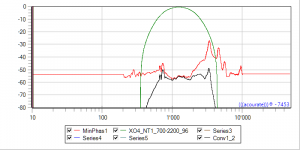 W12_THD_NT1_700-2200.png16 KB · Views: 101
W12_THD_NT1_700-2200.png16 KB · Views: 101 -
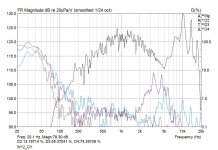 W12CY_THD.jpg108.3 KB · Views: 91
W12CY_THD.jpg108.3 KB · Views: 91 -
 W22_Ping_4c_cos_2000.jpg39 KB · Views: 97
W22_Ping_4c_cos_2000.jpg39 KB · Views: 97 -
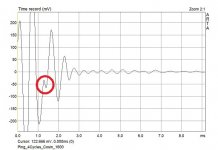 W22_Ping_4c_cos_1600.jpg38.1 KB · Views: 325
W22_Ping_4c_cos_1600.jpg38.1 KB · Views: 325 -
 W22_Ping_4c_cos_1250.jpg35.7 KB · Views: 327
W22_Ping_4c_cos_1250.jpg35.7 KB · Views: 327 -
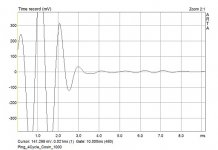 W22_Ping_4c_cos_1000.jpg34.9 KB · Views: 328
W22_Ping_4c_cos_1000.jpg34.9 KB · Views: 328 -
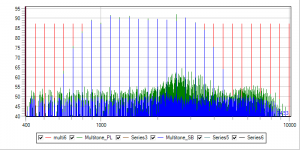 PeerlessVsSb_NT2_800-3500.png16.7 KB · Views: 97
PeerlessVsSb_NT2_800-3500.png16.7 KB · Views: 97
that's funny, I found it was the only onre of the 3" in XRK test to climb high and stay cleans with bells and trumpet possibilities in the high end...which was the trigger to buy it. While I have some areogel Audax or nomex I like too (weel all drivers are colored more or less)
IMHO most people don't know what a natural midrange is. A highly distorted tube sound is "natural" for most people. Some addition of second harmonic sweetness to a voice is even wanted by most.
A natural sound is a product of "undistorted" signal (not only in term of THD), that's why it is difficult to hear it from female voices. Easier to hear it from male voice because the range is wider to the low register.
Even thought I already didn't like extra sweetness to the sound since 20 years ago, it is just within the last 2 or 3 years I was hooked by midrange neutrality. That's after I more or less successful in building class-B amplifier that I can live with...
Speaker should be neutral/accurate, amplifier should be neutral/accurate, the recording should be neutral/accurate, only then we have a chance to hear this neutrality.
Nothing to say about EQ... but for me sorting out drivers is still important cause I 'm staying with passive filters, so EQ is not possible acuratly. I will go for sure for active when I can affoard it when it could compit with the dac I have.
Yes. I had to go with active because getting the low frequency correct with passive 3-way is very difficult. The top drivers are still passive. Every parts of the filter is designed and chosen carefully using most suitable high quality opamp and power supplies are the well proven Jung's super regulator.
I like paper too, while my everyday loudspeaker is aluminium from 125 hz to 20 K hz...
More or less same here hehe. But I always work very hard to make it sound neutral. It cannot be done with using measurement device, only ears that can do it (Surprise!).
I could have wrote your phrases, seems we share a similar experience...
And for the worse I have in my friends bvand some bollocks breaker when it comes to talk about sound and music: musicians, an opera tenor, very few hifi enthusiasts btw, I let you imagine the bad moments I can sometimes live 😀... I can imagine I'm not alone here, not talking about those whom are both diyers and musicians...
And for the worse I have in my friends bvand some bollocks breaker when it comes to talk about sound and music: musicians, an opera tenor, very few hifi enthusiasts btw, I let you imagine the bad moments I can sometimes live 😀... I can imagine I'm not alone here, not talking about those whom are both diyers and musicians...
And for the worse I have in my friends bvand some bollocks breaker when it comes to talk about sound and music: musicians, an opera tenor, very few hifi enthusiasts btw, I let you imagine the bad moments I can sometimes live 😀...
😀
Well, you obviously know that, amongst others, the two big loudspeaker manufacturers of the UK did a lot of laser interferometry research on cones and domes of any kind. That was back in the late eighties and early nineties They both didn’t end up using paper, because the decay of the breakup modes of paper cones wasn’t up to their standards.Paper is not stiff so cannot behave like a piston. There are other good things that we want from midrange reproduction that cannot be given by flexing cone material like paper. But I think advanced cone manufacturers like Focal know very well the problem of their drivers.
Now one could deny such things and be convicted of something else, but hey, that’s only an opinion. Don’t try to frame it as some truth. It’s not. And even so I dare to state paper can be good enough. But not better by definition.
Well, you obviously know that, amongst others, the two big loudspeaker manufacturers of the UK did a lot of laser interferometry research on cones and domes of any kind. That was back in the late eighties and early nineties They both didn’t end up using paper, because the decay of the breakup modes of paper cones wasn’t up to their standards.
Now one could deny such things and be convicted of something else, but hey, that’s only an opinion. Don’t try to frame it as some truth. It’s not. And even so I dare to state paper can be good enough. But not better by definition.
Do you know the material used by Wilson Audio, especially in the Sabrina?
- Home
- Loudspeakers
- Multi-Way
- World's Best Midranges - Shocking Results & Conclusions.
